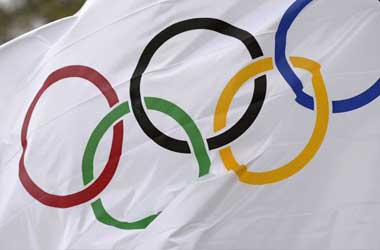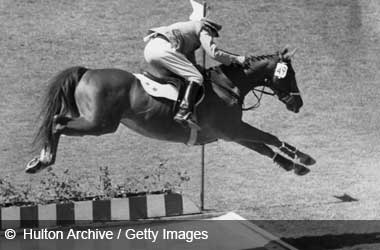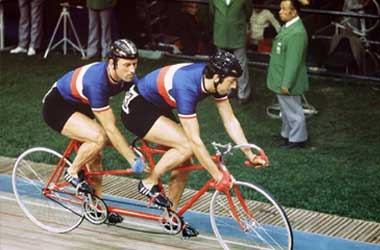Strangest Sports That Were Once Part of the Olympics

On top of that, five new sports — baseball, surfing, skateboarding, karate and sport climbing — will be included in this year’s Olympic games.
But what about the sports that used to be a part of this international event? Over the years, the Olympic games have included some bizarre disciplines.
Let’s see which ones have made history as the strangest sports that were once part of the Olympics.
Live Pigeon Shooting

Nearly 300 birds were killed during the event, with Belgian participant Leon de Lunden winning the gold upon shooting 21 pigeons.
This discipline was not well received by the audiences, which is why the committee made an executive decision not to repeat the event.
Tug-of-War

Tug-of-war used to be played by two teams consisting of eight people. According to the rules, the teams would pull the rope for five minutes, trying to make the other team move six feet. If none succeeded, the judges would declare additional five-minute overtime. If the game was still tied, the winning team was the one that had gotten the other team the farthest. Great Britain dominated this sport, with two gold, one silver & bronze medals over the years.
Croquet

In the 1900 Paris Olympic games, women athletes were first allowed to participate in the Olympics. Interestingly, croquet was one of the few sports that they could play that year.
Although croquet is considered a predominantly British sport, only French athletes participated in 1900. The sport did not live to see another appearance in the Olympics, as only a few people showed up to watch the event.
Rope Climbing

The rope was 25-feet long, and the competitors were judged on both their speed and their climbing style. However, that was only the case at the 1896 event. After that, judging the style of climbing was considered subjective.
The most impressive athlete to compete in this discipline was probably George Eyser, a gymnast who won the gold in 1904 despite having a wooden leg.
Solo Synchronized Swimming

It might sound strange, as you’re probably wondering what a solo swimmer could possibly be synchronized to. The answer to your question is music.
Athletes competed in this sport from 1984 to 1992 with the last winner Kristen Babb-Sprague at Barcelona 1992. However, the sport was considered extremely hard, and, from 1996, the swimmers have had to join a duo or a group to participate in the Olympic games.
Pistol Dueling

That’s why it might not come as a surprise that pistol dueling was once part of the Olympics.
There’s no reason to worry, though — the athletes didn’t actually shoot at each other. Instead, they would shoot at dummy versions of themselves.
This discipline was just a trial event, and its only appearance was at the 1906 Intercalated Games in Athens. Unsurprisingly, it did not make the cut.
Water Motorsports

The introduction of this sport was more of an engineering feat than an athletic skill, which is why it only appeared at one event — in 1908.
During the event, the athletes had to drive the motorboats for five laps around an eight-nautical-mile course for a total of 40 nautical miles (70 km). After the 1908 games, the committee decided to discontinue the sport, as it did not represent the spirit of the Olympics.
Distance Plunging

All you had to do was dive underwater and glide as far as you could. The winner was the swimmer who plunged the furthest.
Unfortunately, this discipline did not last long at the Olympics. It only saw the light of day at the 1904 Olympic games, making William Dickey from the USA the only champion at distance plunging.
Equestrian Long Jump

The event only made one appearance, as it was not well received by the audience. Only 17 athletes entered the competition.
Constant van Langhendonck, a Belgian jumper, and his horse, Extra-Dry, won the gold with a 6.1-meter jump. As a comparison, the world record is held by Mike Powell, who made a jump of 8.95 meters in 1991.
Tandem Bicycle Sprint

The event appeared at the first modern Olympic games in 1896 and lasted until the 1972 Games in Munich.
Teams consisting of two men competed in a 2,000-meter race with pretty straightforward rules.
You might still see the event at the Paralympics, where a person who is visually impaired or blind takes the rear seat, while a sighted non-professional takes the front.
Ballooning

Competitors used gas balloons and flew them to a pre-set target, where they had to drop a weighted marker.
The discipline was later pronounced extremely dangerous, and it was officially discontinued from the Olympic games.
Glima

However, this sport was part of the Olympic games until 1912. Unfortunately, there is no official record of when glima became an Olympic sport.
The rules of this wrestling variant required the competitors to stand straight and circle clockwise around the opponent. Then they would try to get the opponent’s body (any part between the elbow and the knee) to touch the ground.
Poetry
Lastly, one of the strangest disciplines to appear at the Olympic games was poetry. Not many people know that creating and reading poetry was part of the Olympics from 1912 to 1948. The poems had to be inspired by the idea of sport, and the whole idea came from the French aristocracy.
At one point, competitors also applied to win medals for architecture, music, painting, literature, and sculpture. All of these events were first included at the 1912 Stockholm Olympics and were part of the Olympic culture until they were discontinued in 1948.




